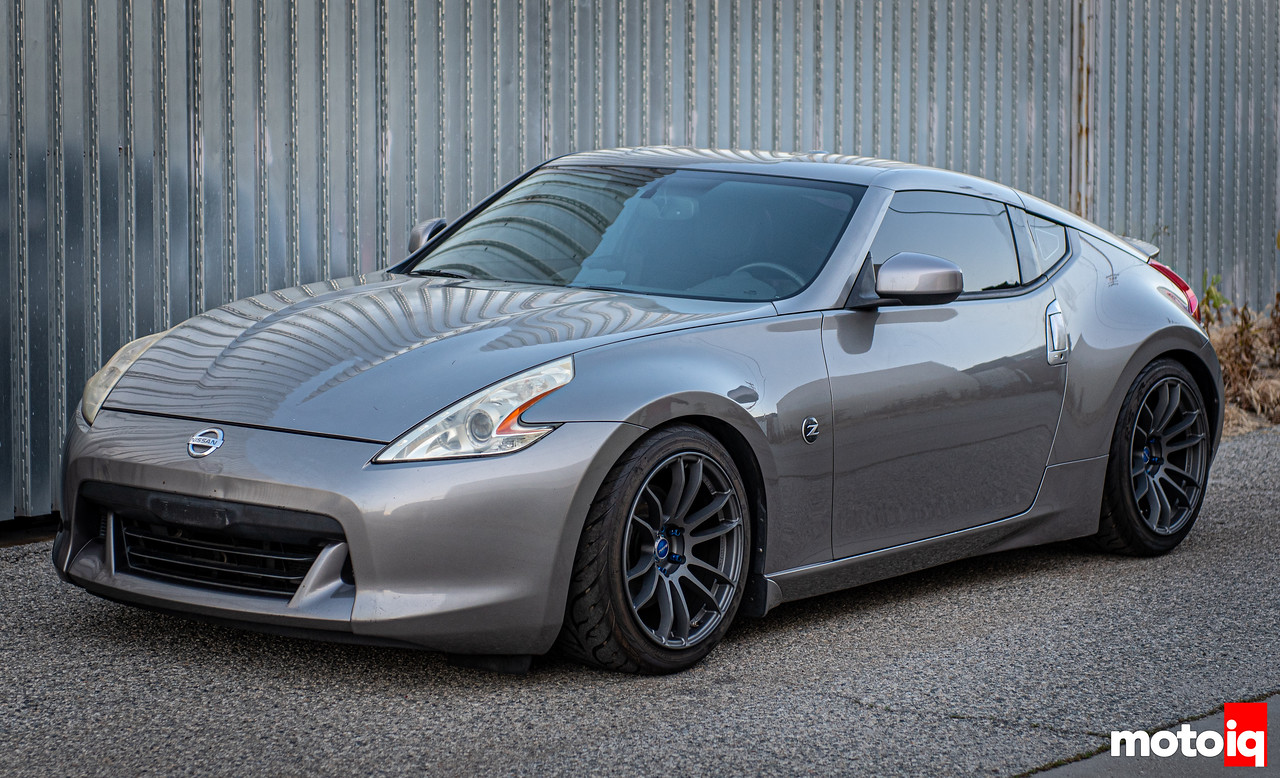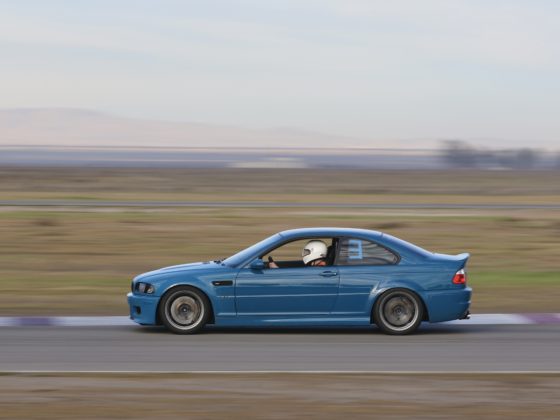The new tune took into mind our much bigger exhaust cam, higher compression, better flowing heads, headers and intake manifold. Sebastian was able to use the VVEL system to act like a mild cam at low RPM to make good low and mid range but the give valve motion like a long duration and high lift cam at higher rpm for more peak power. He also tuned the air fuel ratio and the spark tables to allow our car to run 91 octane gas safely with the 12:1 compression.

Next it was time to pump the gasoline out of the tank and pour in the E95 to go for serious power. Here Sebastian dumps in some of the E85 we had brought from our shop. With the car full of high octane and cool burning E85, Sebastian was able to add more timing making use of the power potential. It takes about 50% more E85 than gasoline to make the same power so the fuel tables had to be modified for E85 operation too.

It was time for the moment of truth. On pump gas, our engine put out 346 wheel hp and 283 lb ft of torque. This is 60-80 more hp than a 370Z will put out on this type of dyno. This is about the equivalent of 415 crank hp! It is a huge gain on a modern NA engine. On E85 the engine put down almost 367 wheel hp and 293 lb ft of torque, or about 440 crank hp! That is serious power and torque for a streetable 3.7 liter NA engine, just about 100 whp per liter! This was the most powerful NA 370Z that Specialty Z has tuned to date.

Driving the car was amazing, it revved and pulled to the rev limiter like no other 370Z we have driven. The engine when combined with the lightweight ACT flywheel lets the car rev freely and the VVEL system gives a steady stream of torque from off idle to the 7800 rpm fuel cut. The powerband is way wider than the VQ35DE HR with way more low end power and a frantic eagerness to pull through the rev range, more than the mean numbers suggest. The way the engine pulls through the powerband and screams up top reminds us of how the 9A engine of Porsche GT3 feels. The engine has put quite a bit of excitement into the Z.
Clark and Sebastian tell us that from their Grand Am race car VQ engine experience, long tube, big runner headers and larger in diameter air intake tubes should give us another 10-15 whp. Since the owner of the car wanted to run any factory part in his exhaust system, the Z1 parts are the best choice by far but if he ever wants to pop for custom headers and intakes, we would be glad to make that happen to and are curious to see what the VVEL engine can really do! Right now it’s still mighty impressive!




15 comments
This entire series was a real treat!! Feel free to put a dyno vid up on the motoiq youtube 🙂
What $/hp gain are we talking about here?
Around $200 per pony. It’s about $14k to replicate this engine build.
Seb tuned my car back in 2014 N/a and the same dyno I made more power and torque N/a on e85 than you did 371hp 291lbft. Except I had a stock rotating assembly and a dry sump. Recently had the car retuned and made 401hp after a switch to ecutek.
For us the owner didn’t want to go to long tube headers because he wanted backward compatibility with the stock exhaust system. He also didn’t want to spend more for a different air intake. Add the 5=10 more hp you get from dry sump and its right there.
I didn’t have long tubes either z1 shorties
That is pretty good, what sort of head work do you have?
Jun 272 cams and a better intake manifold
I’m saying that you spent 3-5k on a high comp motor that could have been used on an intake and an external oil pump to allow it to run past 8000 and been 20-hp higher. There isn’t a need to build these motors NA beyond cams. Only time it would be worth it is for a big displacement increase like Soho just did but even then they made like 3 more hp than my last retune at BTW.
I would have liked to run long tube headers and a different intake, but we can only do what a customer wants to do. To me a dry sump is pretty hard to integrate on a street car with AC and all, not to many customers will pop for that.
Excellent info and cool build! I was wondering why the Moroso check valves instead of a catch can for each bank? I assume the rest of the pcv system is kept as stock? I.e stock pcv valves still in place or the valve was drilled out? A little unclear as to how it was plumbed and why it was chosen over catch cans?
I’d like to know more about the PCV setup. What Moroso check valve part number was used?
With regards to the routing, the check valves are place inline with the rear port with the direction of the flow going from valvecover to intake pipe port. The front PCV valve is kept, along with the factory hose connecting to the front manifold vacuum ports. Is this correct?
I too would like any additional info on the check valve addition vs catch cans if possible.
Because the breather lines are actively part of the sealed crankcase and the VVEL system not being under throttle control and not being able to have an open breather. Routing them to a catch can would be a big vacuum leak and the RPM could run away.
I understand your reply but only see potential of a vacuum leak if you were venting the cans to atmosphere otherwise its still closed loop system. I think this was an initial misunderstanding on my part. I thought the check valves were initially inline with the pcv valve loops. Hence asking why cans were not put inline with the pcv valve loops Instead and doubling valves in the loop.
If I understand the plumbing it looks like those are the rear valvecover breathers crossed over to opposite banks intake with moroso valve inline. Does this balance pressure across banks vs stocks same side rear valve cover breather to same side intake? Looks like the actual pcv valve loops are left alone?